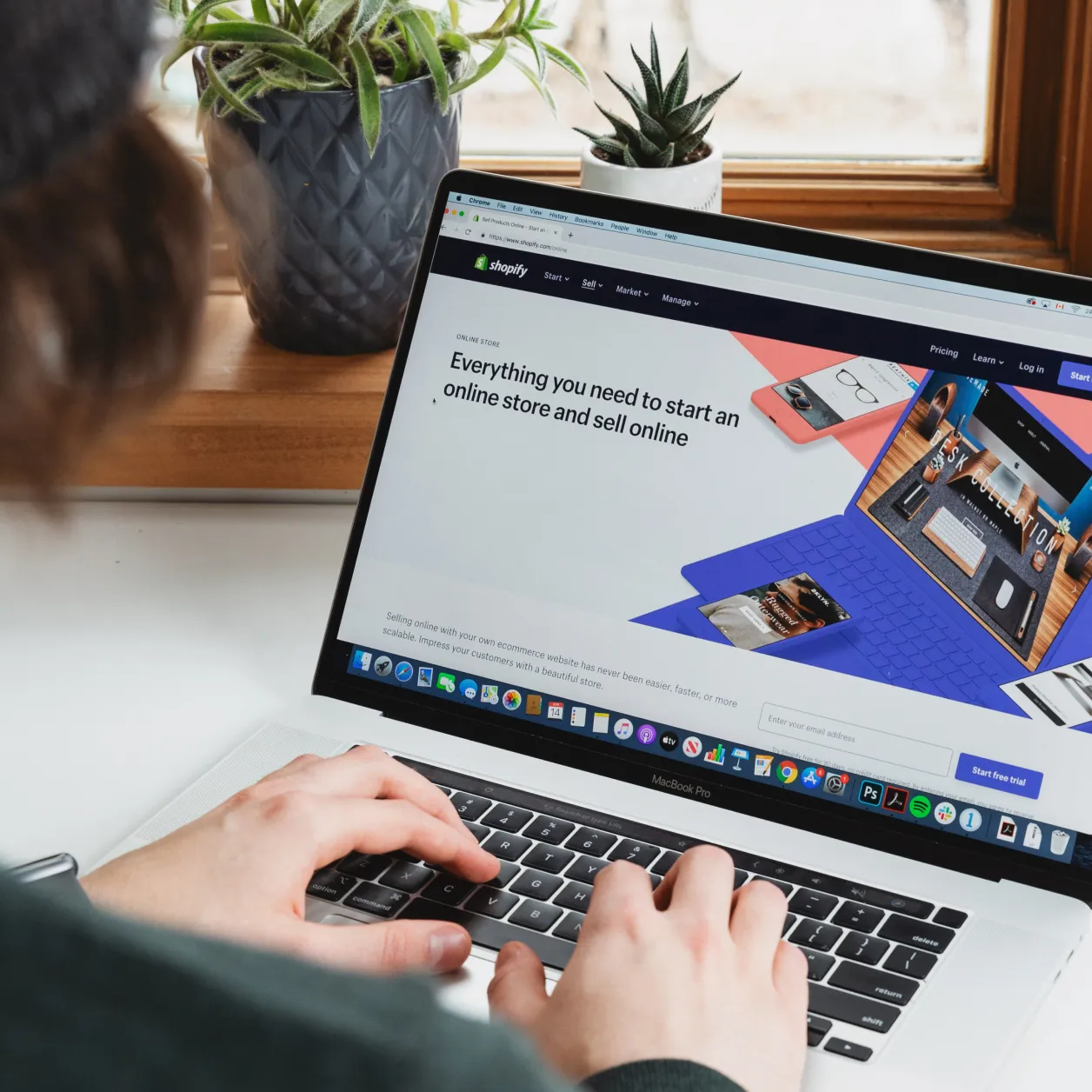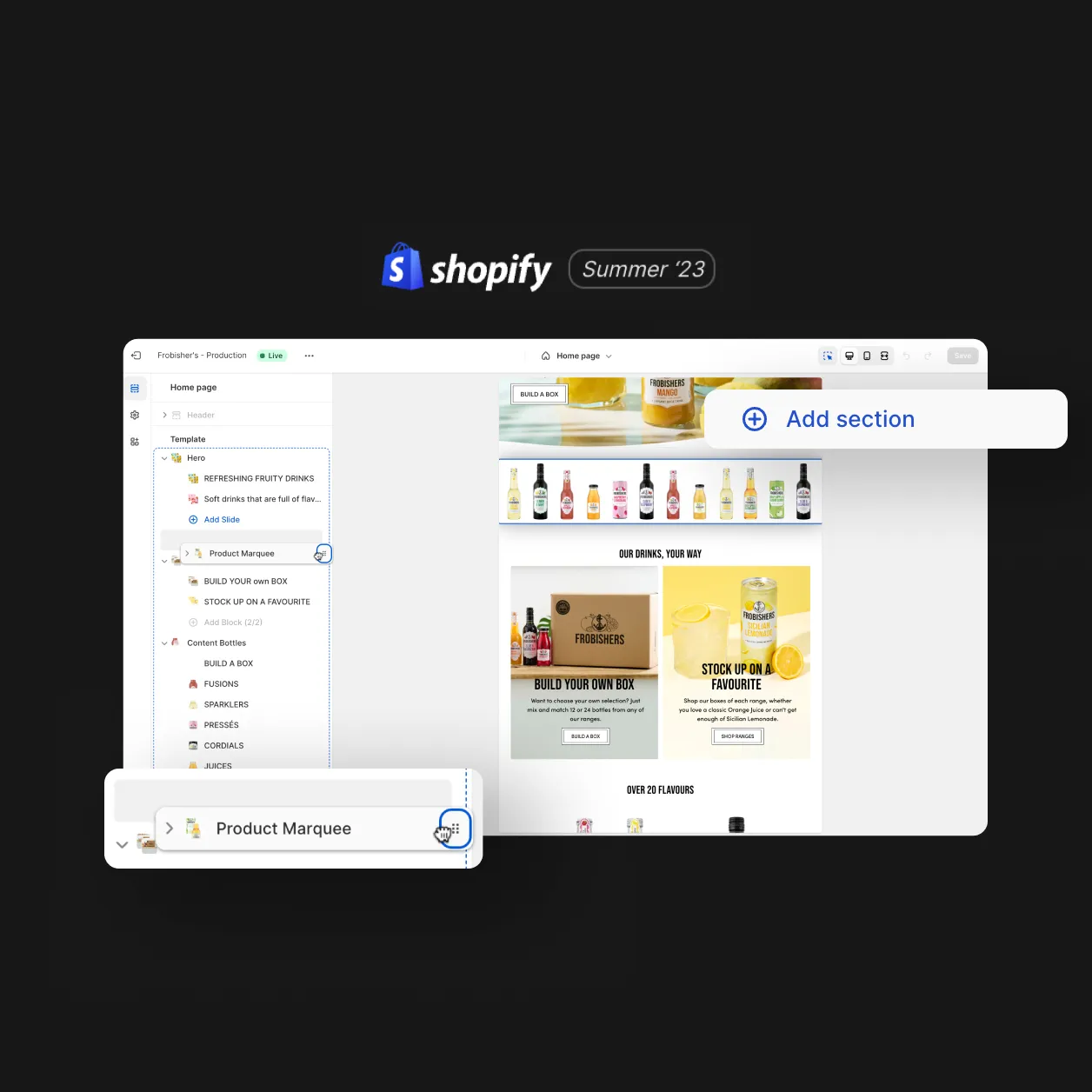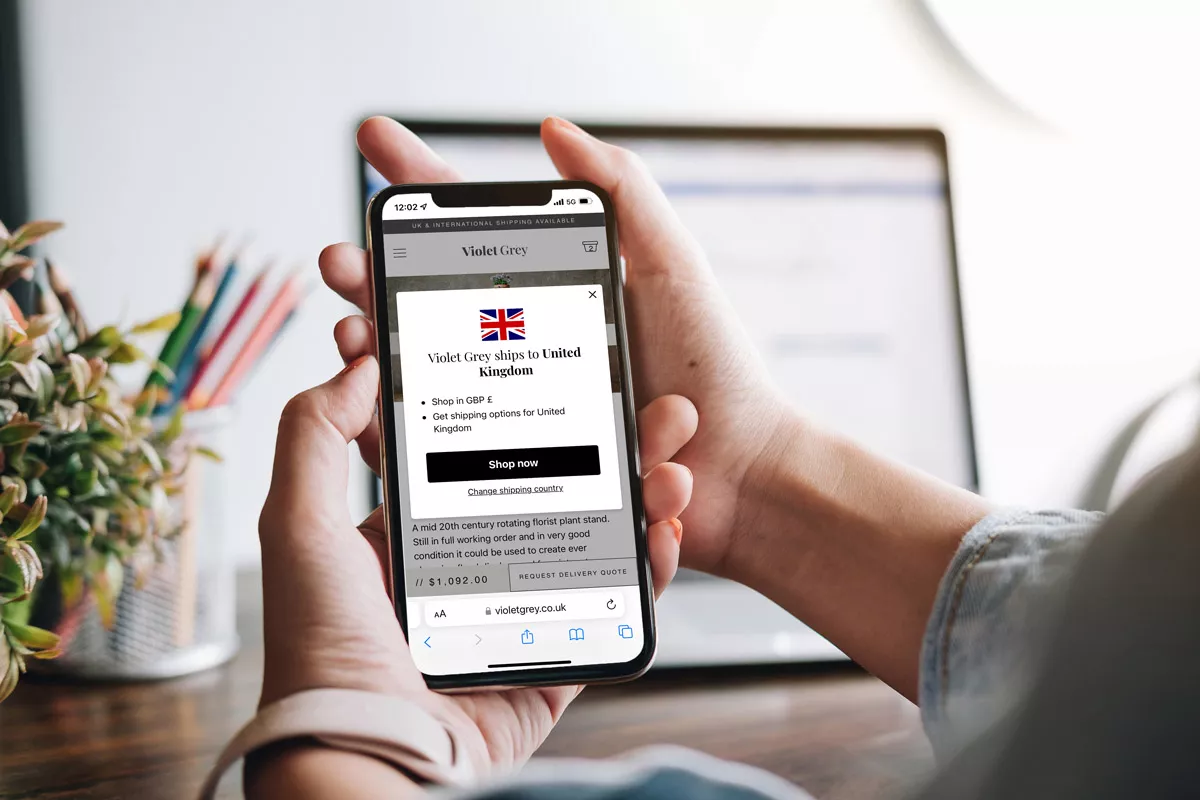
Shopify has recently announced that it has surpassed one million merchants worldwide on its platform, these businesses come from more than 175 countries and choose Shopify to run their online stores because of its flexible nature and tools that cater to businesses of all sizes.
Scalable inventory management and widely available third-party technology have been crucial factors in this rapid success.
In this blog post, we look at the factors merchants will need to consider before selling internationally.
Identifying international markets on Shopify
To expand your Shopify store internationally, start by identifying the best geographic markets to target.
- Avoid a one-size-fits-all strategy as each country has unique buying habits.
- Analyse your store’s session location data to identify potential international visitors and investigate further.
- If you have no international traffic, select a few markets with potential demand.
- It’s best to target markets that are geographically close or share native language/cultural similarities.
Shopify multi-currency and international payments
To sell globally on Shopify, there are two options: Use a single store with multi-currency, language, shipping, and duties settings (or) have a separate store for each market using geolocation technology. Use Shopify’s Geolocation app to display prices in the customer’s local currency using IP address tracking and adjust prices per currency to account for additional costs in each region. See our recent post on Multiple-currency selling on Shopify for a more in-depth look.
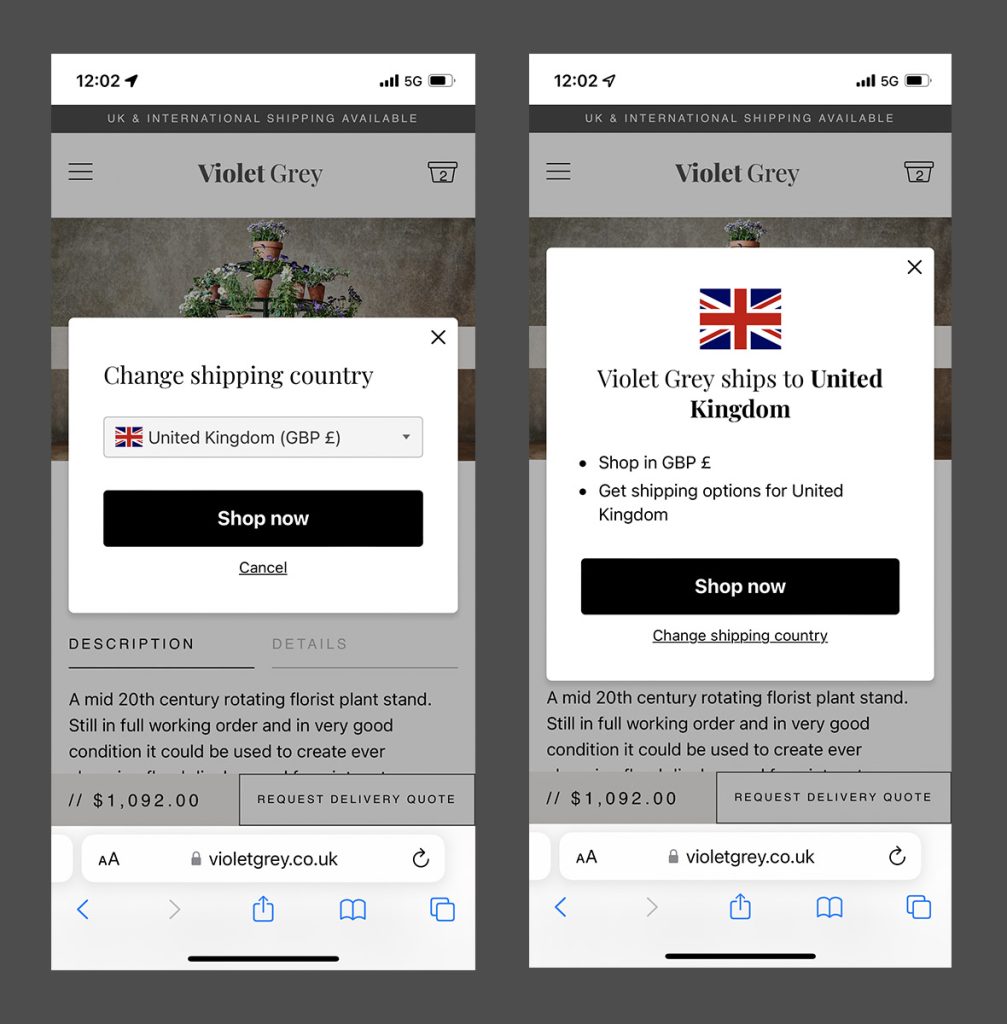
Shopify taxes and duties
Selling internationally can be complicated due to different tax laws in various countries. European markets include taxes in product prices, while North American markets add taxes later in the checkout. Incorrect tax calculations can cause problems like delayed shipping and reduced profits. Shopify automatically includes or excludes taxes based on the customer’s location, but a tax compliance solution like FastSpring, Global-e or Avalara Avatax can offer extra protection and ensure compliance with all tax rules.
Shipping internationally with Shopify
To send products worldwide in Shopify, create shipping zones for new target markets in the Shipping settings. Consider size, weight, and any rules in the international markets. Choose an international shipping and fulfilment app like Zendbox or ShipStation, and use a specialised app like Looped or Clicksit for easy returns.
Internationally shipping on Shopify
To cater to new target markets, create shipping zones specific to them in the Shipping settings of the Shopify platform. While creating international shipping rates, consider the shipping strategy you will use. It’s crucial for merchants to factor in the size and weight of their products since they can significantly impact shipping prices depending on the destination. This may require altering the packaging to make it suitable for long-distance travel, causing differences in size and weight from domestic parcels.
It’s equally important to research the international markets that you’re shipping to. Some regions may have specific rules or requirements that you need to comply with. Your products might also fall under problematic categories (CDB or a locality like Belgium, where Shopify payments are not supported and an alternative payment vendor is therefore required.
After accounting for all these variables, it’s advisable to choose an international shipping and fulfilment app available on Shopify, such as ShipStation. Make sure that the app you select provides sufficient coverage for the regions you plan to ship to. While Shopify shipping apps usually have returns integrated, it’s always recommended to use a specialised app like Looped or Clicksit for easy returns labels and automation.
Domain configuration for international selling
To create a more localised experience for users, you can set up international domains specific to different countries, as we did for Whole Supp UK and WholeSupp EU. For more information about this visit our blog post: Multi-Currency, Multi-Store, and Headless.
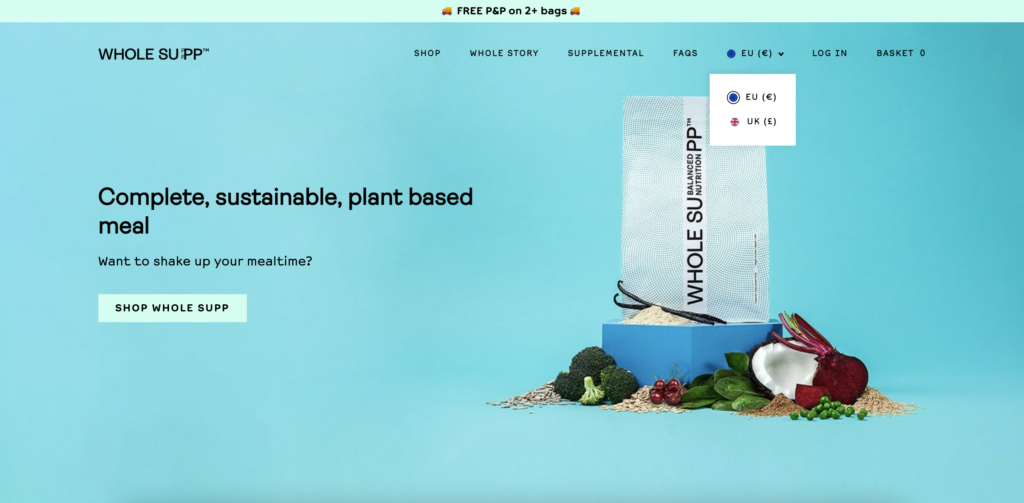
These domains can enhance customer confidence that they are accessing a local version of your website. This, in turn, can increase the likelihood of customers paying in their own local currency since domains configure pricing and language defaults tailored to the targeted markets. For instance, if a European user visits your website with a domain targeting Ireland, prices will automatically appear in EUR. It is also worth considering the limitation of third-party applications such as Recharge which in early 2022 did not support consolidated multicurrency subscriptions – elements of this feature have since been rolled out in beta.
From a technology perspective, Shopify automatically takes care of SEO by adding hreflang tags to each domain. This helps search engines identify which international domain corresponds to which region of the world. Therefore, when users conduct online searches, the correct domain, pricing, and language will appear in their search results.
Native language translations
Studies from CSA Research found that approximately 76% of consumers prefer to purchase from stores in their native language. Therefore, translating stores properly is a viable strategy for enhancing sales from international customers. Fortunately, the Shopify platform enables you to dynamically set multiple languages for a single store, catering to customers from all over the world without the need for creating separate stores for each region.
To help you translate your store and its content, various apps are readily available such as Translayte, Transifex or Weglot. From an SEO perspective, there is no substitute for folder structures containing /uk/, /de/, /it/ complete with content translated by a native speaker – for this Weglot is our preferred option.
Global marketing for internalisation
Now your website is ready to tap into global markets we recommend implementing a marketing campaign to boost international traffic and increase the demand for your products.
Advertising through region-specific campaigns is an excellent method to target particular markets and direct them to the correct localised version of your globalised website. The setup of your website (single store / multiple stores) will determine the structure of marketing product feeds within Google Merchant Centre and Meta.
Introducing Shopify Markets
Shopify Markets is a (relatively new) feature set that was launched by Shopify in February 2022. This update is significant because it offers improved duties management, which simplifies the process of calculating and collecting taxes and fees for products sold in different regions. Additionally, it allows for completely custom pricing per territory, giving businesses the ability to set prices based on local demand and competition.
Another key feature of Shopify Markets is the ability to manage language and currency from one single store. This means that businesses can create a personalised shopping experience for customers based on their location, language preferences, and currency type, all within a single storefront. This is especially beneficial for businesses looking to expand globally and serve customers in different regions. Take a look at how we added this to Violet Grey, a premium seller of garden antiques who operates in the UK, USA and throughout Europe.
Furthermore, Shopify Markets offers more comprehensive analytics and reporting capabilities. This allows businesses to track sales, analyse customer behaviour, and make data-driven decisions that will help them optimise their marketing efforts and grow their revenue.
Overall, Shopify Markets is a powerful tool that can help businesses of all sizes expand their reach and increase their revenue by providing customised shopping experiences to customers around the world. Read our post: Shopify Decoded – What is Shopify Markets? if you want a more in-depth guide on how it could benefit your business.
Selling internationally on Shopify Plus
Shopify Plus is designed for enterprise-level scalability and provides tools to maximise global selling efficiencies. It offers all the standard Shopify features for selling globally, including currency, language, pricing, and shipping settings. Additionally, Shopify Plus allows for up to 9 expansion stores, enabling you to duplicate your store with ease for each market of your international selling strategy. While this approach requires extra work, planning, and consideration, it provides complete granular control over each region you wish to sell to.
Multi-store selling internationally with Shopify
Selling internationally with Shopify can be done through a single store, or through multiple dedicated stores for each region you wish to target. However, there are important considerations to keep in mind when using a multi-store approach.
The main benefit of having an individual Shopify store for each country or region is complete control over every element of the store setup. This allows for unique products to be offered and unique campaigns, imagery, and style to be tailored to each market. This level of control over content and copy allows merchants to adjust their tone of voice to target specific international markets effectively.
While it is technically possible to have unique products and content from one store, it can become challenging to manage when all are mixed within one Shopify account. It is worth noting that you can run multiple non-Plus stores and use geolocation technology to redirect them based on the user’s location. Additionally, Shopify Plus includes up to 9 additional stores at no extra charge.
Using multiple Shopify stores can also simplify the process of duties management, taxes, and shipping fees for each region. However, it is essential to consider the potential costs associated with setting up and maintaining multiple stores, as well as the additional work required to manage and update each store separately.
In summary, selling internationally with Shopify can be achieved through a single-store or a multi-store approach. The latter allows for complete control over each element of the store setup, including unique products and tailored campaigns, imagery, and style. While managing multiple stores can be complex, it can simplify the process of duties management, taxes, and shipping fees for each region.
Multi-selling, the challenges
Challenges of a multi-store approach include inventory management, increased marketing workload, and logistics considerations. Managing inventory and stock levels across multiple channels may require a third-party tool. Updating multiple stores instead of one can be time-consuming for internal teams.
A product information management system like Productsup or Akeneo can help update product information and sync all your stores.
When using a multi-store approach to selling internationally on Shopify, it is important to consider edge-case scenarios. For example, if customers want to purchase for someone in another region, will you allow them to change their currency or store?
Consider using Shopify Plus for the multi-store approach as the overall monthly cost may be lower than paying for multiple single stores with Shopify. Investing in Shopify Advanced, which costs around $299 per month in addition to doubling up your tech stack (reviews, ECRM, subscription vendor etc).
Summary
In conclusion, selling internationally with Shopify can be straightforward, but it is important to carefully consider various factors to ensure a seamless e-commerce experience for your customers.
Design
Inspiring behaviour change through visual experiences. Our digital design services ensure instant clarity and visuals that cut-through in a cluttered market.


